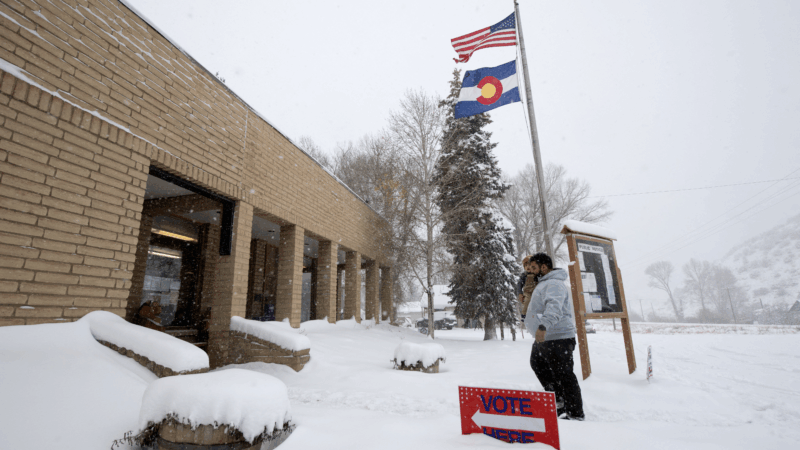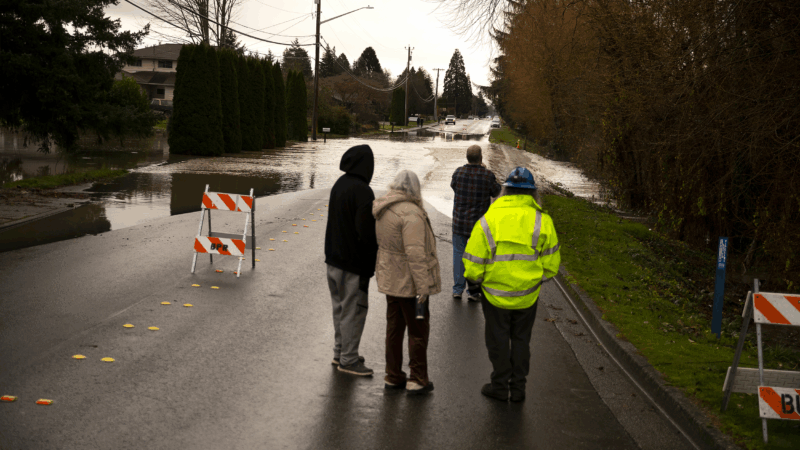Supreme Court limits environmental reviews of infrastructure projects
The U.S. Supreme Court sharply narrowed the scope of a key environmental statute on Thursday. The decision makes it easier to win approval for highways, bridges, pipelines, wind farms and other infrastructure projects.
The National Environmental Policy Act is considered the nation’s premier environmental law because it sets up a regulatory regime under which the federal government seeks information from a wide array of agencies about the impact of proposed infrastructure projects before they’re built.
At issue in Thursday’s case was the proposed building of an 88-mile stretch of railroad that would connect Utah’s oil-rich Uinta Basin to the national freight rail network. Once built, the new rail lines would facilitate the transportation of crude oil to refineries in Texas and Louisiana along the Gulf Coast.
In carrying out the review, the U.S. Surface Transportation Board sought input from other agencies, prepared a 3,600-page report and approved the railroad project, after concluding that its transportation and economic benefits outweighed the negative impact on the environment. The U.S. Court of Appeals in Washington subsequently ruled that the Board had violated NEPA, by failing to consider the environmental effects from oil drilling and production, referred to as upstream, and oil refining and distribution, known as downstream.
The Supreme Court, however, reversed that ruling, and in so doing dramatically limited the 1970 law. The vote was unanimous, though Justice Neil Gorsuch did not take part in deliberations, and the court’s three liberals wrote a more limited concurring opinion. The Court’s conservatives, however, took a major whack at the NEPA law.
“They did a major cutback,” said Harvard Law Professor Richard Lazarus, who has written extensively about NEPA. Essentially, he said, the court had created a new categorical rule barring any consideration of the upstream and downstream effects of such projects. “Right or wrong, that’s not been the NEPA law for 50 years,” said Lazarus.
Writing for the court majority, Justice Brett Kavanaugh said that courts should defer to agency determinations about where to draw the line when considering environmental effects, as long as agency choices “fall within a broad zone of reasonableness.”
Kavanaugh distinguished NEPA from other environmental laws, arguing that it’s “purely a procedural statute” that is not meant to be “a roadblock.” He framed his opinion as a “judicial correction,” pointing to “delay after delay” on multiple projects, which he maintained sometimes “bordered on the Kafkaesque.”
Lazarus said Kavanaugh’s opinion reads less like a judicial correction and more like a legislative policy initiative. “He goes on this tirade where he talks about how awful NEPA has been and how it stopped all these things, how it costs jobs. And there’s no citation [to any factual findings]. He’s made it up,” said Lazarus. “It’s a complete policy argument.”
At the same time, though, Lazarus conceded that over the years there has been consistent pushback against NEPA both in the courts and in Congress. He noted, for instance, that Congress, in 2023, during the Biden administration, took steps to limit some of the NEPA review.
What’s more, some environmental groups have also endorsed speeding up the process, including, as Lazarus observes, “national groups who want those transmission grids built, and those windmills up, and those solar panel huge facilities built. So NEPA has created that tension.”
But many environmental groups were dismayed by Thursday’s decision. Earthjustice called the decision an invitation to the Trump administration to “ignore environmental concerns as it tries to promote fossil fuels, kill off renewable energy, and destroy sensible pollution requirements.”
Conversely, a large array of mining, oil, lumber, real estate and other interests were thrilled by the court’s decision.
“In recent years, courts have gone farther and farther afield in demanding agencies speculate on downstream impacts over which the agencies have no control and that are beyond their regulatory authority,” said lawyer Hadassah Reimer, who filed a friend of the court brief on behalf of these interest groups. She said the decision “will promote more efficient and effective NEPA review for countless projects across the country.”
‘She’s awesome’: How U.S. veterans helped Venezuela’s Machado escape
In a daring nighttime martime operation, U.S. veterans whisked Venezuela's María Corina Machado out of the country to claim her Nobel Peace Prize in Oslo
A momentous week as Syria celebrates lifting U.S. sanctions and a year without Assad
As they mark the first anniversary of toppling Bashar al-Assad's regime, Syrians also celebrate another coming milestone: the lifting of sanctions, which could help give the country a new start.
The Justice Department has now sued 18 states in an effort to access voter data
The Department of Justice has sued four more states as part of the Trump administration's far-reaching attempt to access sensitive voter data. The DOJ is also suing Fulton County in Georgia.
In photos: Flooding in Western Washington state forces thousands to evacuate
Record flooding in Washington state has forced tens of thousands of people to evacuate after torrential rains this week.
Clair Obscur: Expedition 33 sweeps The Game Awards — analysis and full winners list
Independent video game Clair Obscur: Expedition 33 swept the Game Awards last night. The L.A. ceremony draws millions of views for its industry honors and exclusive previews of upcoming games.
There’s a ‘Dead Man’ in church in this snarky ‘Knives Out’ mystery
A firebrand fundamentalist is stabbed to death at church in Rian Johnson's new film, Wake Up Dead Man. This over-the-top whodunit uses mystery conventions to open up a spiritual inquiry.








